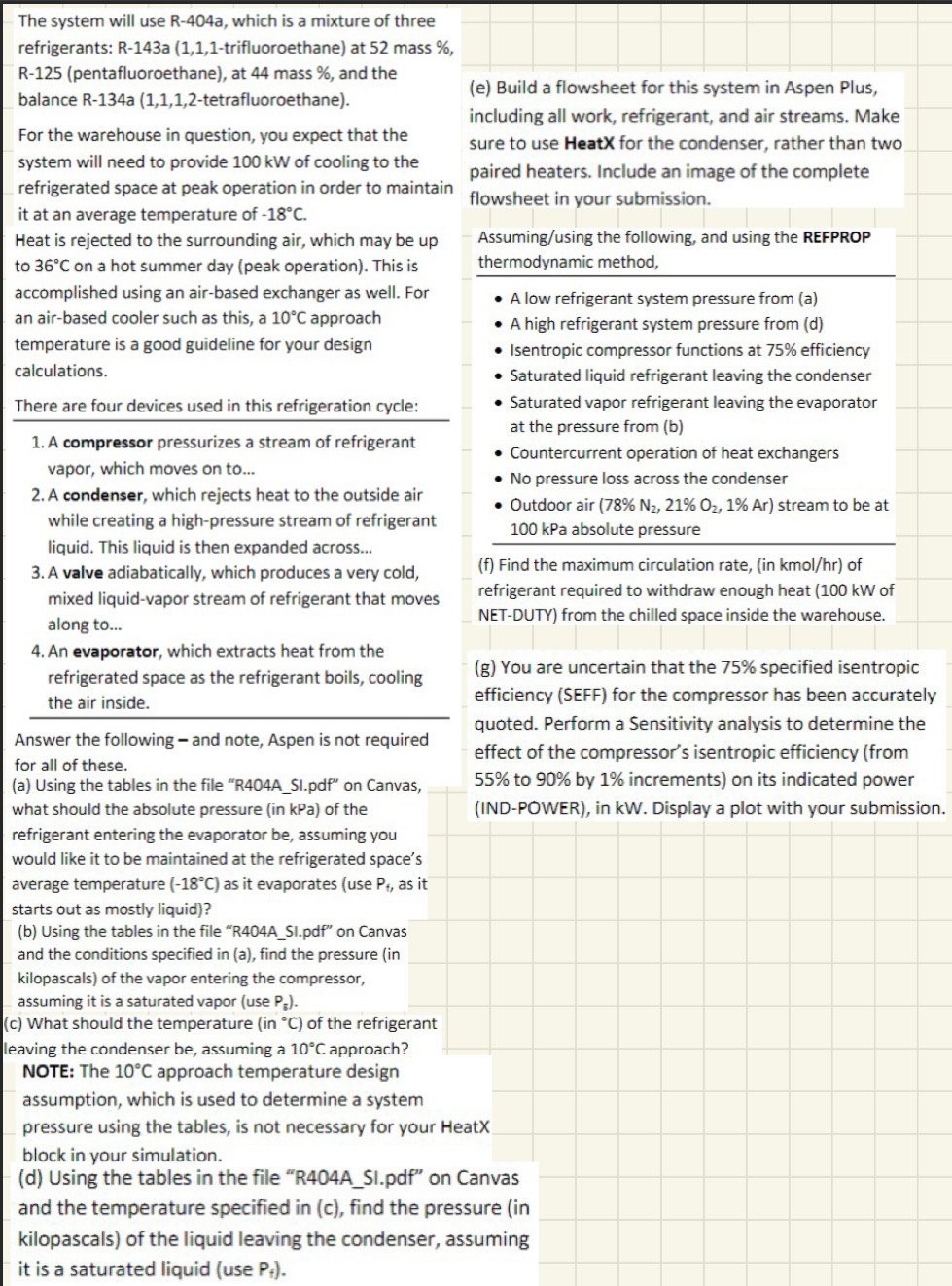Answered step by step
Verified Expert Solution
Question
1 Approved Answer
refrigerants: R - 1 4 3 a ( 1 , 1 , 1 - trifluoroethane ) at 5 2 mass % , R - 1
refrigerants: a trifluoroethane at mass
Rpentafluoroethane at mass and the
balance Ra tetrafluoroethane
For the warehouse in question, you expect that the
system will need to provide of cooling to the
refrigerated space at peak operation in order to maintain
it at an average temperature of
Heat is rejected to the surrounding air, which may be up
to on a hot summer day peak operation This is
accomplished using an airbased exchanger as well. For
an airbased cooler such as this, a approach
temperature is a good guideline for your design
calculations.
There are four devices used in this refrigeration cycle:
A compressor pressurizes a stream of refrigerant
vapor, which moves on to
A condenser, which rejects heat to the outside air
while creating a highpressure stream of refrigerant
liquid. This liquid is then expanded across...
A valve adiabatically, which produces a very cold,
mixed liquidvapor stream of refrigerant that moves
along to
An evaporator, which extracts heat from the
refrigerated space as the refrigerant boils, cooling
the air inside.
Answer the following and note, Aspen is not required
for all of these.
a Using the tables in the file RASIpdf on Canvas,
what should the absolute pressure in kPa of the
refrigerant entering the evaporator be assuming you
would like it to be maintained at the refrigerated space's
average temperature as it evaporates use as it
starts out as mostly liquid
b Using the tables in the file RASIpdf on Canvas
and the conditions specified in a find the pressure in
kilopascals of the vapor entering the compressor,
assuming it is a saturated vapor use
c What should the temperature in of the refrigerant
leaving the condenser be assuming a approach?
NOTE: The approach temperature design
assumption, which is used to determine a system
pressure using the tables, is not necessary for your HeatX
block in your simulation.
d Using the tables in the file RASIpdf on Canvas
and the temperature specified in c find the pressure in
kilopascals of the liquid leaving the condenser, assuming
it is a saturated liquid use
e Build a flowsheet for this system in Aspen Plus,
including all work, refrigerant, and air streams. Make
sure to use HeatX for the condenser, rather than two
paired heaters. Include an image of the complete
flowsheet in your submission.
NOTE: The deg C approach temperature design
assumption, which is used to determine a system
pressure using the tables, is not necessary for your HeatX
block in your simulation.
Assumingusing the following, and using the REFPROP
thermodynamic method,
A low refrigerant system pressure from a
A high refrigerant system pressure from d
Isentropic compressor functions at efficiency
Saturated liquid refrigerant leaving the condenser
Saturated vapor refrigerant leaving the evaporator
at the pressure from b
Countercurrent operation of heat exchangers
No pressure loss across the condenser
Outdoor air N O Ar stream to be at
kPa absolute pressure
f Find the maximum circulation rate, in kmolhr of
refrigerant required to withdraw enough heat kW of
NETDUTY from the chilled space inside the warehouse.
g You are uncertain that the specified isentropic
efficiency SEFF for the compressor has been accurately
quoted. Perform a Sensitivity analysis to determine the
effect of the compressors isentropic efficiency from
to by increments on its indicated power
INDPOWER in kW Display a plot with your submission.

Step by Step Solution
There are 3 Steps involved in it
Step: 1

Get Instant Access to Expert-Tailored Solutions
See step-by-step solutions with expert insights and AI powered tools for academic success
Step: 2

Step: 3

Ace Your Homework with AI
Get the answers you need in no time with our AI-driven, step-by-step assistance
Get Started


